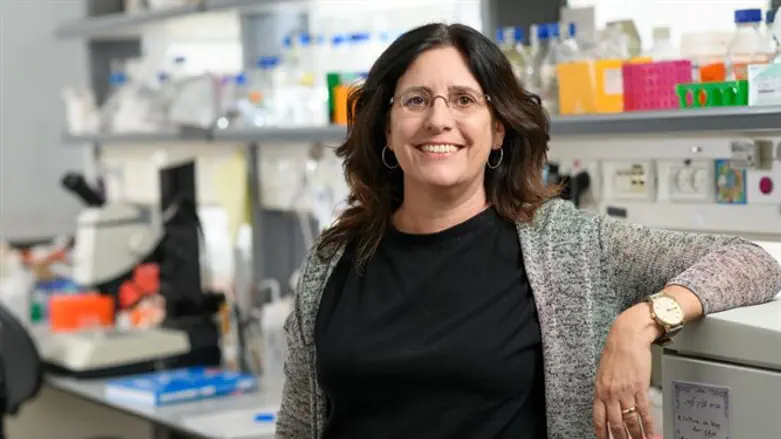
Each year, hundreds of thousands of people worldwide suffer from peripheral nerve injuries, which often leave them with long-term disabilities. The peripheral nervous system is analogous to the circulatory system; a network of vessels that reaches all parts of the body, but instead of blood flowing through vessels, electrical signals propagate information through thin fibers called axons, which are engulfed within nerve trunks.
These nerve trunks are the communication network relaying information from all parts of the body to the brain, coordinating activity, and generating motor and sensory function. If one of the nerve trunks is damaged or torn – a common condition in limb injuries – a patient can experience pain, paralysis and even a lifelong disability.
In such situations, surgical intervention is necessary to repair the damaged nerve. The standard treatments are direct suturing of detached nerves or, in cases where the gap formed in the nerve trunk is large, surgeons transfer an intact nerve trunk from the patient’s leg and implant it at the site of the injury, thus creating damage in another area (i.e., the leg).
Today, there are methods to rejoin nerve trunks to allow the axons to regrow and restore motor and sensory function. One such method is by implanting a synthetic hollow nerve conduit aimed at bridging the gap and allowing the nerve to heal without secondary damage to the patient.
One of the main problems preventing optimal regeneration is that axons within severed nerves have difficulty regenerating and reaching their target. This may be attributed in part to misguided axons that sprout in multiple directions, decreasing probability to reach their target organs.
“They need orienting cues to help them,” explains Prof. Orit Shefi, of Bar-Ilan University’s Kofkin Faculty of Engineering, Institute for Nanotechnology and Advanced Materials, and Gonda (Goldschmied) Multidisciplinary Brain Research Center.
Dr. Merav Antman-Passig, a researcher in her lab, adds: “These guiding instructions need to remain in the body for an extended time, since axons grow fairly slowly.”
A technique developed by the research team of Prof. Shefi’s laboratory, led by Dr. Antman-Passig and Dr. Jonathan Giron, is used to fill a nerve conduit with gel containing a number of physical and chemical components that promote and align axon regrowth. Their technique was recently published in Advanced Functional Materials.
The researchers filled hollow nerve conduits with engineered aligned collagen gels. In the body, aligned collagen fibers help axon pathfinding, but, in the hollow nerve guides available today, the aligned collagen fibers are absent. The aligned collagen gel acts as a scaffold for axons and directs their growth. In addition, the conduits contain a substance called NGF (nerve growth factor) which, as its name implies, is essential for the growth of the nervous system.
“Imagine that we implanted guiding cues in the gel, which are the aligned collagen fibers, and that these guiding cues also have a treat for the growing axons,” explains Dr. Antman-Passig, “like bait neatly scattered for the growing axons.”
Prof. Shefi adds: “An axon that reaches the gel follows these cues and finds the right direction more easily. In fact, the novel system combines several techniques for nerve regeneration. Axons like to grow toward these markers that can be left for them, like collagen scaffolding and NGF. The novelty of our method is in the engineering of an organized tissue-like gel that contains components that help restore the nerves, and especially in extending the duration of activity of the gel in the body.”
“If collagen and NGF are simply added in hollow nerve conduits, just like real bait, different cells consume them and actually break them down. After a short time, the growing axons do not have these road signs.
“In the method we developed, we extended the time that these factors are accessible to axons during regeneration. We did this by incorporating NGF-coated magnetic particles that we arranged into the correct structure via a magnetic alignment strategy. This also creates an arrangement of the particles and collagen.”
After characterizing the gel components, the researchers implanted them in nerve conduits and examined the direction of their growth and the platform’s efficacy. The researchers measured the direction of the cell growth and found that with the help of the gel combining aligned collagen and NGF- coated particles, they were able to direct and enhance their growth. Subsequently, they examined the efficacy of the conduit in the rehabilitation of rats with peripheral nerve injury at the sciatic nerve, which prevented them from walking properly. The number of axons that penetrated the innovative gel-filled tube and successfully crossed the injured area was greater compared to the empty tube, and accordingly the restoration of nerve tissue was the highest.
The researchers showed that with the implantation of the tubes and the use of the engineered collagen gel, the functional motor restoration was highest, in comparison to the use of other types of conduits and compared to conduits with gel that was not enriched.
The researchers are now exploring commercialization options and hope that will help functional recovery and accelerate nerve repair following injury.